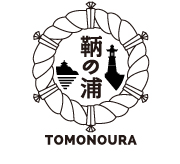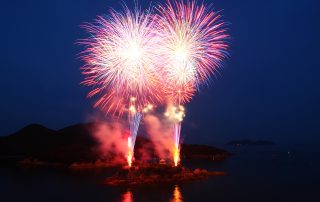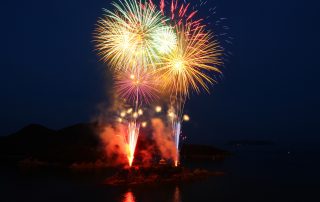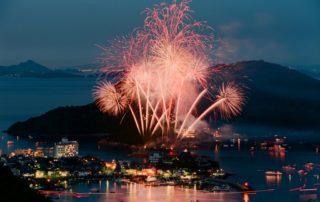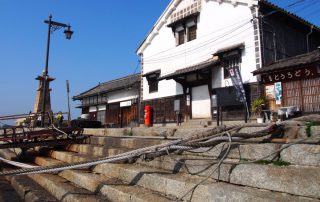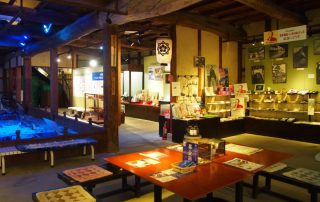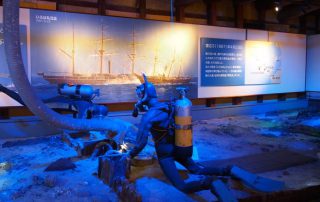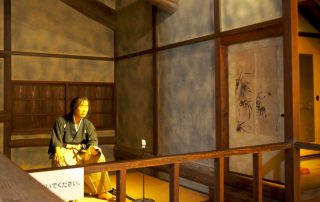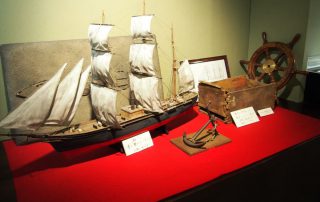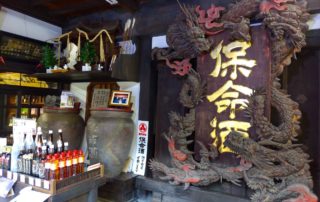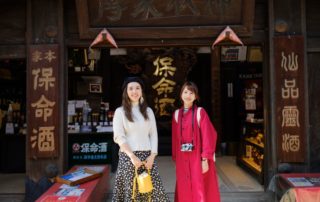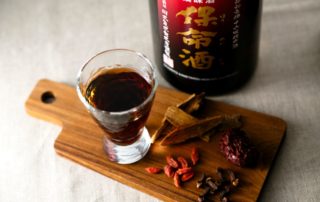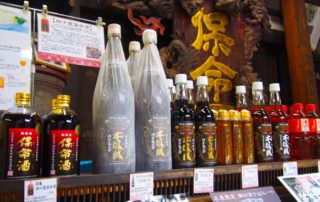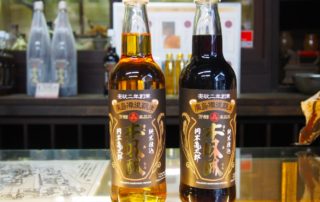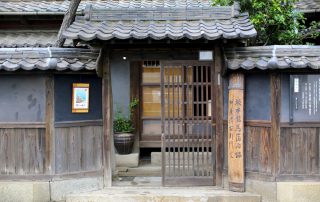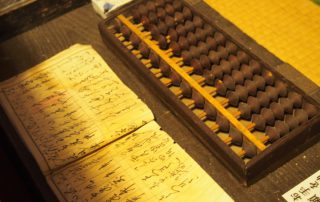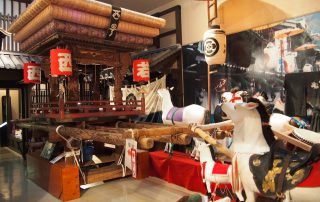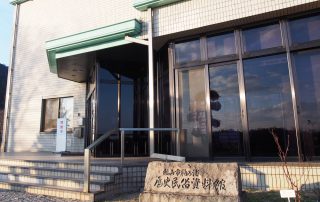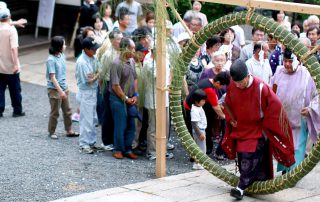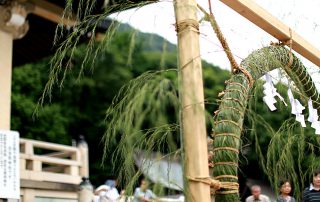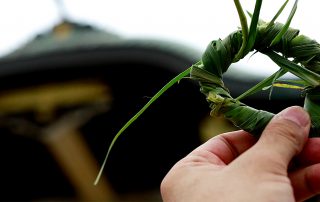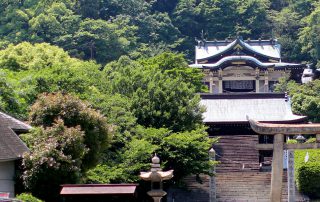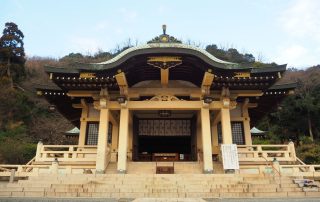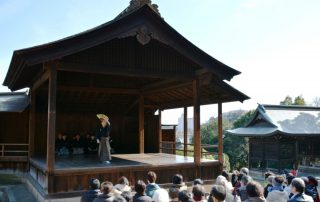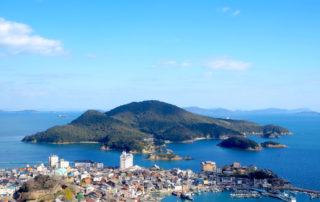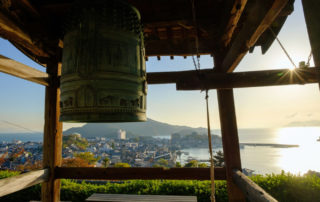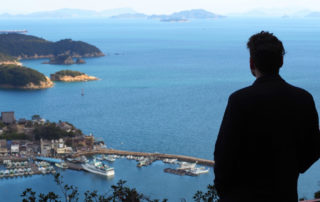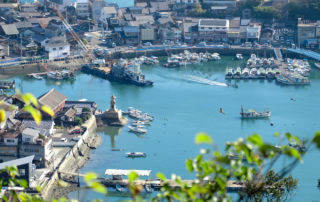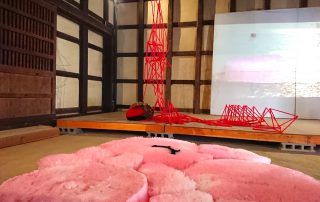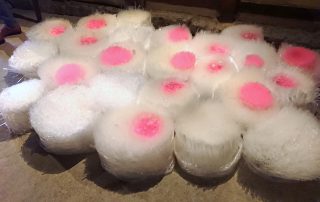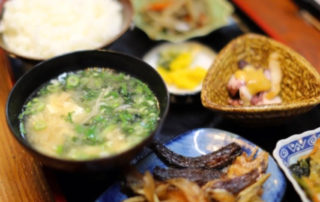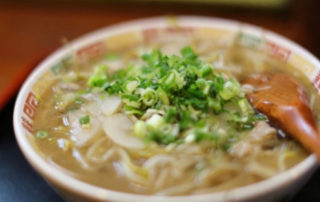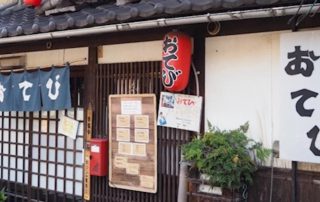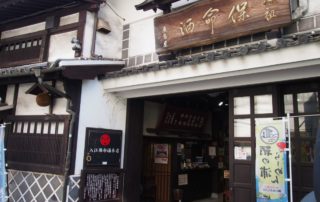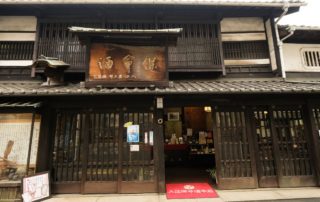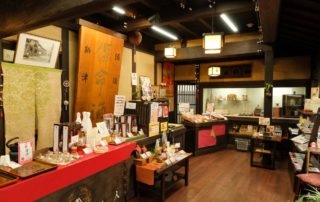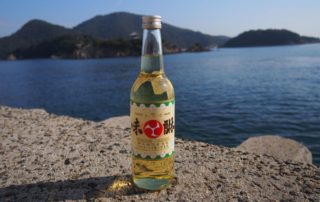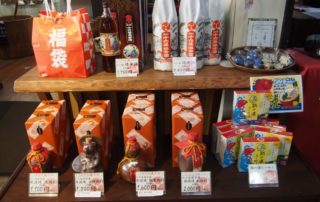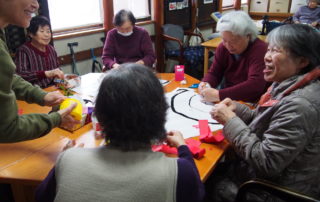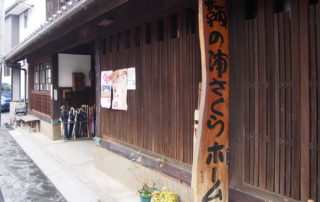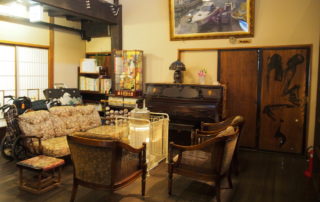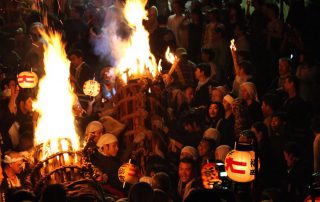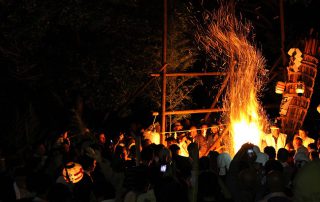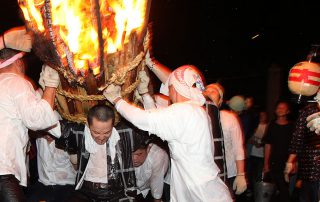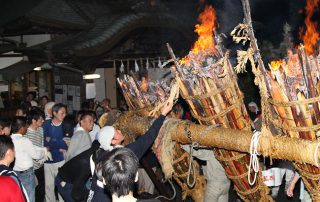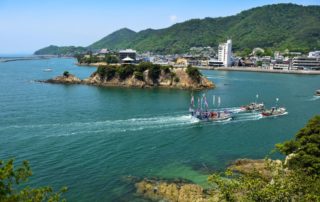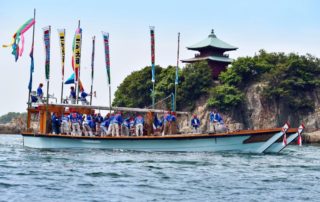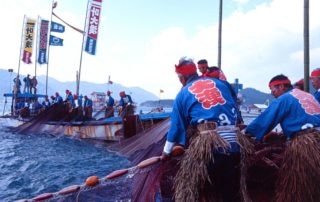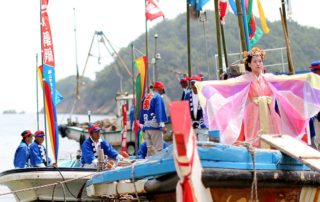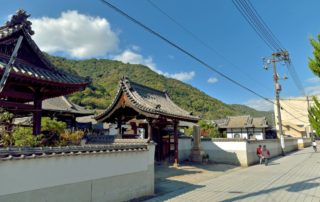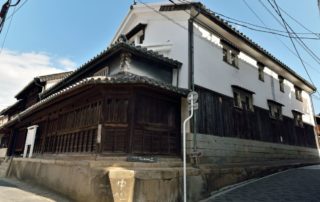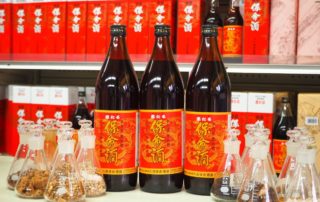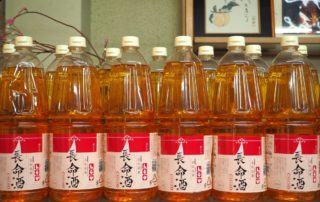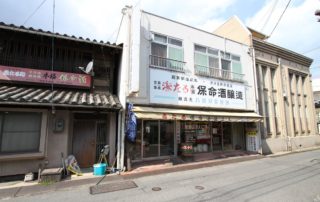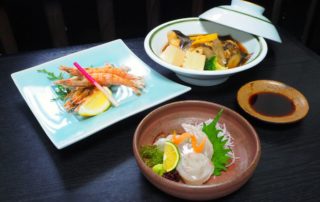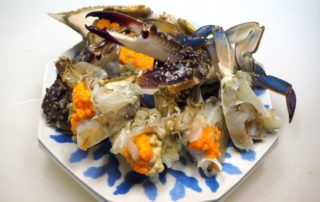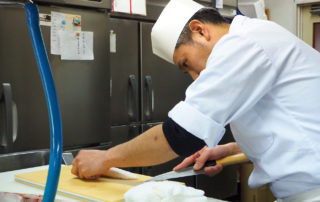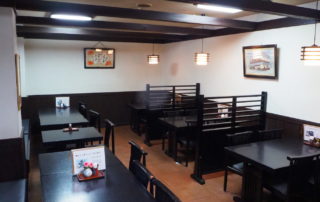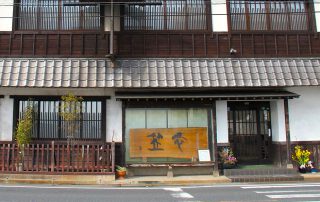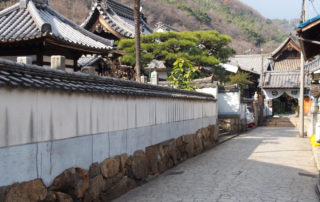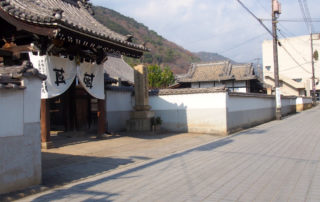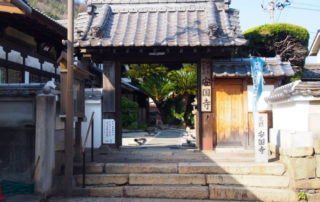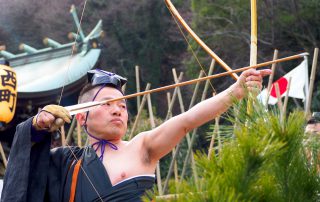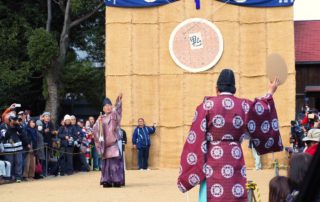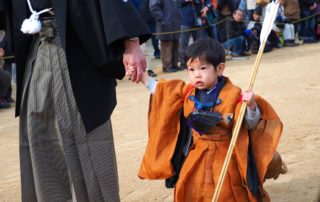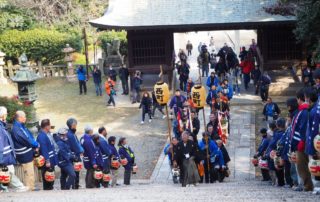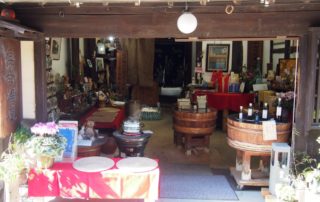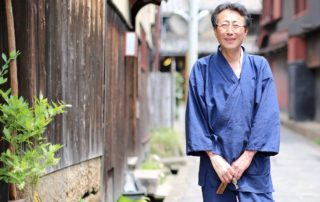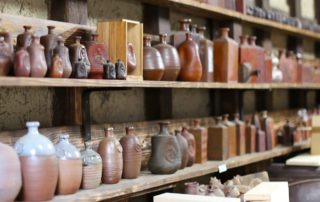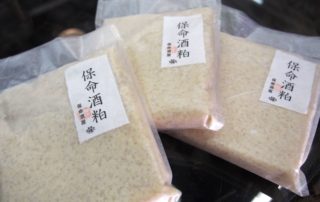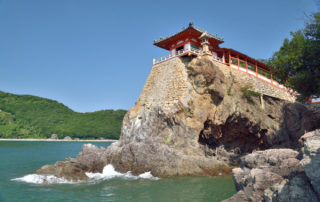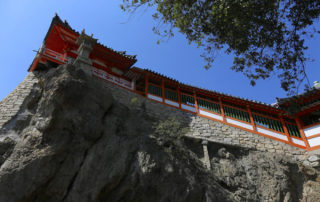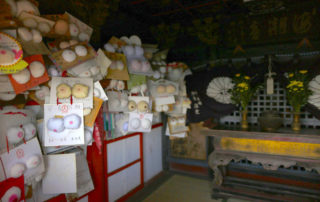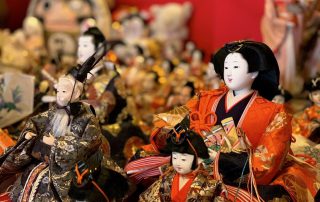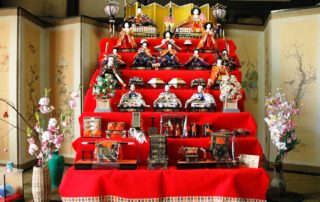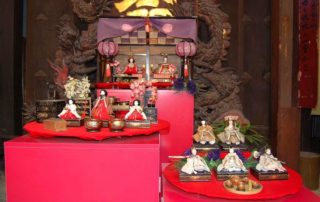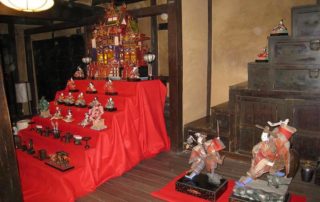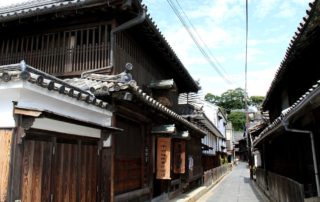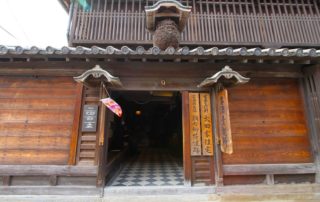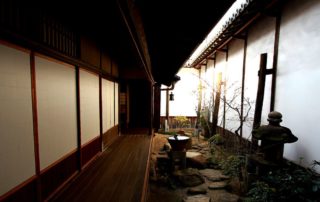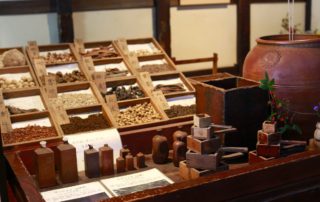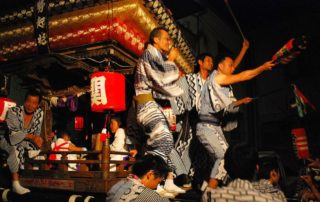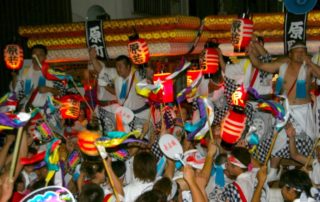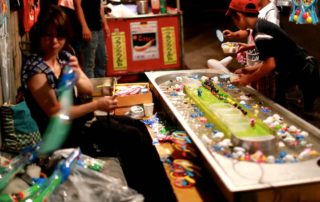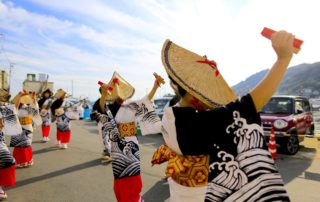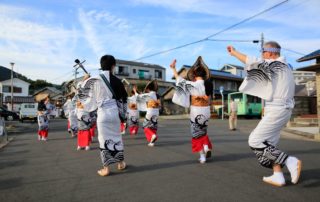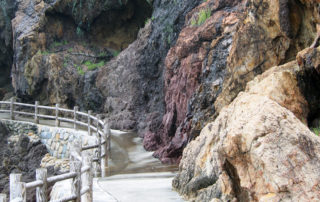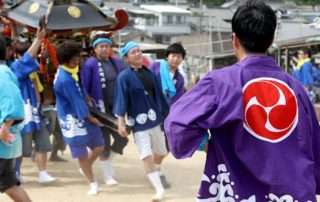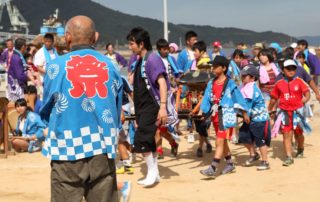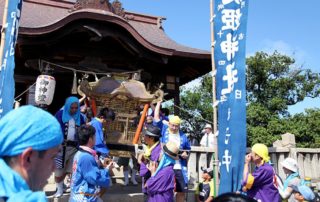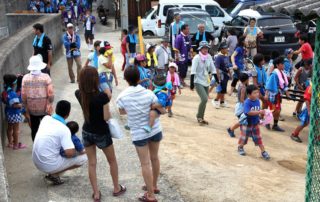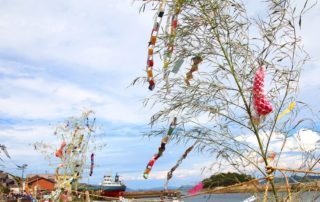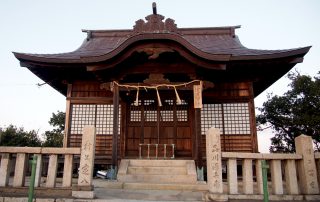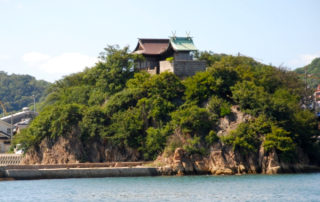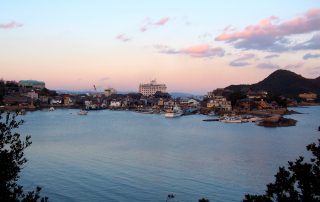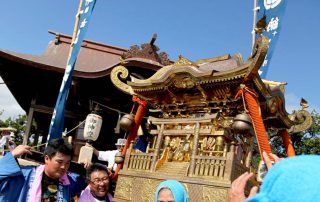Tomonoura Attractions
“Fukuyama Tomonoura Bentenjima Fireworks Festival” – A special event celebrating the arrival of summer
The last Saturday of May, in the midst of the Tomonoura Kankō Taiami (a traditional event of sea bream fishing using a net), the Fukuyama Tomonoura Bentenjima Fireworks Festival is held, a special event celebrating the arrival of summer to the Setouchi. > MORE
“Iroha-maru Tenjikan” – Following Edo-era hero Ryoma Sakamoto’s footsteps in Tomo
Iroha-maru Tenjikan (Iroha Maru Exhibition Hall) is beautiful warehouse with stunning white walls located at the port near Jōyatō (all-night street lamp). It was renovated from a warehouse from the Edo period. > MORE
“Oka-kame Houmei Liquor” that keeps cherishing his old knowledge, so as continually to be acquiring new
A cozy and historical shop which was created by being moved the Nagaya gate of Fukuyama Castle. As you step in, you will be overwhelmed by the huge dragon signboard inherited from Nakamura family, the originator of the Houmei liquor brewery. Okamoto family who has been engaged in the sake industry > MORE
Ryoma was hidden in the attic!? “Ryoma’s hideout”
The“Masuya”residence was once home to a shipping agent who dealt in providing not only accommodation but also supplies for various clans at Tomonoura in the Edo Period. It is here that famous samurai “Ryoma Sakamoto”stayed in hiding in the secret attic room found only after his death. > MORE
“Tomonoura’s Museum of History and Folklore” for a fully comprehensive guide through the history of Tomo
“Fukuyama-City Tomonoura Museum of History and Folklore” was built on the high ground of Tomo castle ruins to celebrate the 70th anniversary of the Fukuyama city system. In the hall, there is a permanent exhibition which displays not only ancient, historical documents, but also more modern texts. > MORE
“Chinowa Kuguri” purifying your soul of all evil by going through a big ring
As you walk through Tomonoura, you may be lucky enough to notice a small ring hanging down, marking an entrance. This is an amulet called “Chinowa”. “Chinowa” is a ring woven by Imperata cylindrica. > MORE
“Nunakuma Shrine” a little Gion protecting the town and the sea of Tomonoura
Nunakuma Shrine is Tomonoura’s representative shrine, so locals call it “Gion-san” or “Gyon-san”. In the Meiji Period, “Watasu Shrine” where Oowatatsumi no Mikoto, a deity of the sea, was enshrined was integrated with “Gion sha” where Susano no Mikoto, one of the three important deities, was enshrined. It soon became a > MORE
Iou-ji Temple – Known as a scenic spot in Tomonoura
“Iou-ji Temple” is built on the hillside, which can be reached by traversing along a narrow, sloping path and up long stairs. It was said to have been founded by the high priest Kukai in the Heian Period (794-1185). > MORE
“TOMONOURA de ART” – coloring traditional streets with art
Every year from late September to early October, TOMONOURA de ART, a contemporary art exhibition, is held throughout the town of Tomonoura. > MORE
“16 blend Houmei liquor with Tomoe mark”, appreciate for its fine taste by making homemade Koji
“Irie Toyosaburo Honten”, one of the four leading Houmei liquor breweries that inherit the Nakamura family tradition, started their business in 1886. Since then, almost every steps have been done by hand, from steamed rice to the making of rice at their breweries inTomo-cho. > MORE
“Tomonoura Sakura Group Home” – Supporting the elderly population in their everyday lives
Although it is a calm and peaceful port town, Tomonoura faces serious challenges in decreasing population and an aging population. Based on these needs in the community, Tomonoura Sakura Group Home supports the elderly > MORE
“Otebi Ritual” – Wish for good health and ward off evil with a big burning torch!
Tomonoura’s Otebi Festival is held in the evening before the second Sunday in July, where the town of Tomonoura is transformed into a sea of fiery reds. The Otebi Shrine Ritual is a purified ritual that takes place on June 4th in the old calendar before the Mikoshi Togyo of Susano > MORE
Beautiful and gallant sea beam netfishing in the sea for a great haul!
Tomonoura’s “Tourism Sea beam netfishing” is very iconic event in early summer in Tomonoura, representing the traditional fishing style “Tie up sea beam netfishing method” which was born in early Edo Period in Tomonoura, making it one of the biggest event in Tomo area. > MORE
“Tomo-cho, Fukuyama City Preservation District for Groups of Historic Buildings” – Preserved harbor town, still just a shadow of its former self
There are 284 historic buildings built during Edo and Meiji Period until Showa Period before WWII preserved around Nishimachi area located on the southern part of Tomonoura. > MORE
Taste the flavorful “Aka Taru Houmei Liquor”, good for health!
Established in 1908, this Houmei Liquor’s brewery “Hatta Homeishu Liquor Shop” focus on “Houmei for health”, producing it by 16 kinds of grass roots fully such as ginseng, cinnamon, dried citrus peel, chrysanthemum, yam licorice, saffron, Chinese wolfberry fruit, Solomon’s seal, clove, and so on. > MORE
A fine but casual Kappo restaurant “Kinugasa”
A classy building located along the seafront at the north entrance of Tomonoura. As you go through the noren (store curtain) waved by the sea breeze, a peaceful and cozy Japanese space will await you. > MORE
“Teramachi Street” lined with temples to protect the castle town
Something you may find surprising when looking at Tomonoura’s sightseeing map, is just how many shrines and temples there are. 19 temples and dozens of shrines are dotted around this small town. > MORE
“Oyumi Ritual (Shinto Bow Ritual)” releasing an arrow to wish for peace and to purify the bad demons of the past
The beautiful musical accompaniments of “Nerota, Nerota”, the Suou (ceremonial dress of lower-class samurai) worn by the archer and the Eboshi (formal headwear for court nobles) all signify the beginning of the sacred bow ritual. The archer gazes at a target about 28 meters away and draws his bow. > MORE
“16 Blend Houmei Liquor” produced in the same way as in the Edo Period
The simple bottle stamped “Bigotomozu 16 Blended Houmei Liquor” looks as if it were precious holy water or Arcanum handed down from mountain hermits. With its long history and sacred appearance, “16 Blended Houmei Liquor” produced by “Houmei Liquor Shop” can transport us back to a calm and spiritual time. > MORE
“Abuto-Kannon Temple” A lacquer-coated Kannon-dou temple stood on a precipitous cliff
“Bandaiji-Kannon Temple”, commonly known as “Abuto-Kannon Temple” is built on the edge of Abuto cape, which is located 4 km west of Tomonoura, and is designated as Japan’s Important Cultural Property. > MORE
“Tomonoura Hina Doll Festival” – The signature festival at the port in Spring
“Tomonoura Hina Doll Festival” is just one of the many annual events in Tomonoura. Hina dolls which are handed down from generation to generation are on display in 100 homes, shops, temples etc. > MORE
“Ōta Residence” – where Tomo’s herbal Houmei-shu was born!
Tomonoura’s local specialty is, without a doubt, Houmei-shu, a Japanese herbal liquor, made with grass seeds, using a process which began back in the Edo Period. > MORE
Watch a small port town come alive at the famous 3-day-long Autumn Festival
Autumn is the busiest season in Tomonoura port town as everyone anticipates the big Autumn Festival. The autumn festival is an annual festival held at “Watasu Shrine”, a supplementary shrine to “Nunakuma Shrine”, from August 11th of the lunar calendar for three days (currently in the middle of September from Friday > MORE
Feel the power of nature! “Goshiki-iwa Rock” – the shore wall in blue, red, yellow, white and black
Sensuijima Island, situated off Tomonoura town, was designated as one of the majestic scenic spots in “Tomo Park” along with the neighboring Tsutsuji-jima Island, Kogo Island, Benten Island, Tamatsu Island and Tsugaru Island in 1925. > MORE
“Togyo-sai Festival and Kangyo-sai Festival (Yodohime Shrine annual festival・Dango festival)” where we can witness the rolling Mikoshi being thrown away!
The annual festival of Yodohime Shrine, the Togyo and Kangyo Festival, is held on the first Saturday and Sunday in August. This festival is also called “Dango (dumpling) Festival.” This is because families in Hira region, where the shrine is located, used to make dumplings on the day before the festival > MORE
“Yodohime Shrine” – a deity watching over the neighbors of the Hira district
Follow a narrow road in which only one car can barely squeeze through and journey past “the two-eyed signal” (a stoplight with only red and green lights). There you will see the Torii gate entrance to Yodohime shrine. > MORE
